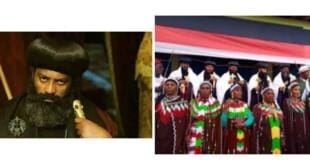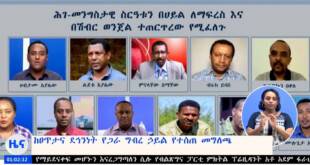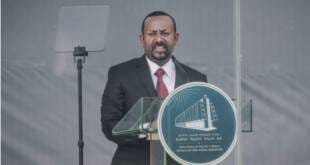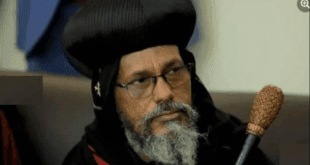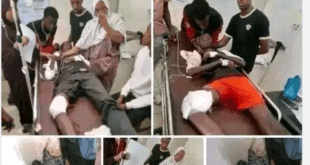A year after Ethiopian Prime Minister Hailemariam Desalegn came to power following the death of longtime leader Meles Zenawi in August 2012, the ruling Ethiopian People’s Revolutionary Democratic Front (EPRDF) remains firmly in control. It has continued to govern through a collective leadership that includes three deputy prime ministers from the Amhara, Tigray and Oromo wings of the coalition; Hailemariam hails from the Southern People’s Party. Party discipline and coherence has held, although the lead-up to elections in 2015 may reveal destabilizing fissures. But while older opposition parties and armed movements have been marginalized, a social movement of Ethiopian Muslims is an important new development.
Rapid economic growth has been key to Ethiopia’s stability. The economy grew by more than 10 percent annually over the past decade, and while growth has slowed down it remains higher than the African average. Recent data, however, suggest that earnings from coffee and gold, Ethiopia’s two largest sources of export revenues, have declined. The World Bank also raised concerns that Ethiopia’s boom has relied too heavily upon public investment and that sustained growth will require a significant increase in private investment.
The political opposition to the EPRDF—currently divided into camps based on whether they subscribe to ethno-national or pan-Ethiopian goals and whether they operate in exile or have remained in the country—has struggled to find channels to influence Ethiopian politics. After competitive elections in 2005 and the subsequent crisis that led to the arrest of much of the opposition leadership and the collapse of the main opposition coalitions, the regime effectively criminalized dissent. Restrictions on independent media and civil society limit the ability of Ethiopians to mobilize outside of the structures of the ruling party. The EPRDF’s dominance was evident in local elections this year, in which it and its affiliated parties won all but one seat nationwide.
As a result, opposition political parties that challenged the regime in 2005 now play virtually no role in national politics. The Semayawi, or Blue, party organized a notable demonstration in June and has some following among the youth, but its potential to challenge the regime is limited. Berhanu Nega, a politician who had considerable influence in 2005, is now operating in exile without a significant presence in the country. Repression and the use of anti-terrorism laws, as well as weak structures and leadership, limit the opposition’s ability to operate within Ethiopia.
Meanwhile, several groups, notably the Oromo Liberation Front (OLF) and the Ogaden National Liberation Front (ONLF), remain engaged in protracted armed struggles, but Addis Ababa has effectively managed these military challenges. Oromo nationalism remains potent, but the OLF leadership is divided and discredited. Promising talks between the ONLF and Addis Ababa collapsed in October 2012, but there are officials on both sides that see advantages from a negotiated settlement. The government would like to end the war in order to concentrate on development of the region’s natural gas and other resources. Some Ogadenis recognize that they are unlikely to win the military contest and wish to end the ferocious counterinsurgency campaign in the region. But reaching a durable agreement, a recent International Crisis Group report accurately notes, will require “unprecedented concessions from both sides.”
Finally, the ongoing demonstrations by Ethiopian Muslims, who make up approximately 40 percent of the country, provide an important model of politics outside of the ruling party that relies upon neither armed struggle nor the strategies of electoral competition on a hopelessly lopsided playing field. The demonstrations began 18 months ago to protest government interference in Islamic affairs and the regime’s links to the Ethiopian Islamic Affairs Supreme Council. The movement has been extraordinarily disciplined and nonviolent and has succeeded in part by focusing on a specific set of issues. Demonstrations have been held after Friday prayers in Addis Ababa but also notably in other towns across Ethiopia.
Muslim activists emphasize that they are operating within the framework of the Ethiopian constitution and that they are not seeking to overthrow the regime. The Ethiopian government, in contrast, has consistently claimed that the protests were organized by extremists bankrolled from overseas and seeking to establish an Islamist state. More recently Addis Ababa has identified neighboring Eritrea as the source of this alleged external support. The movement’s leadership was arrested July 2012 and charged with terrorism in October.
Earlier this month there were clashes between Ethiopian security forces and Muslims reportedly following the arrests of three local imams in Kofele, a town in the Oromo region. A heavy police presence and arrests in Addis Ababa following the Eid al-Fitr ceremonies celebrating the end of Ramadan on Aug. 8 further raised the temperature and tensions. Government spokesman Shimeles Kemal alleged that the arrests were of “Salafist elements who tried to create disturbances.”
Despite the government’s arrests and condemnations, the Ethiopian Muslim demonstrators have shown that sustained, nonviolent political activism is possible in Ethiopia. What is not clear, however, is the movement’s future. Many leaders in the older ethno-nationalist movements, including those with large Muslim constituencies, such as the Oromo and Somali, view the multiethnic nature of the movement with trepidation. Others, including leaders in the Semayawi party, view it as a vehicle to advance pan-Ethiopian political ideas. Some Muslim activists propose a strategy of sustained low-level protest that avoids confrontation and recognize that a quick victory is impossible. To move more assertively would spark a military crackdown, and the movement’s leadership is likely to lose control if there is violence. The key dynamics to watch in the lead-up to elections in 2015 are therefore competition within the ruling party and the potential for the Ethiopian Muslim movement to create new space for political activism.
Terrence Lyons is associate professor of Conflict Analysis and Resolution and co-director of the Center for Global Studies, George Mason University.
